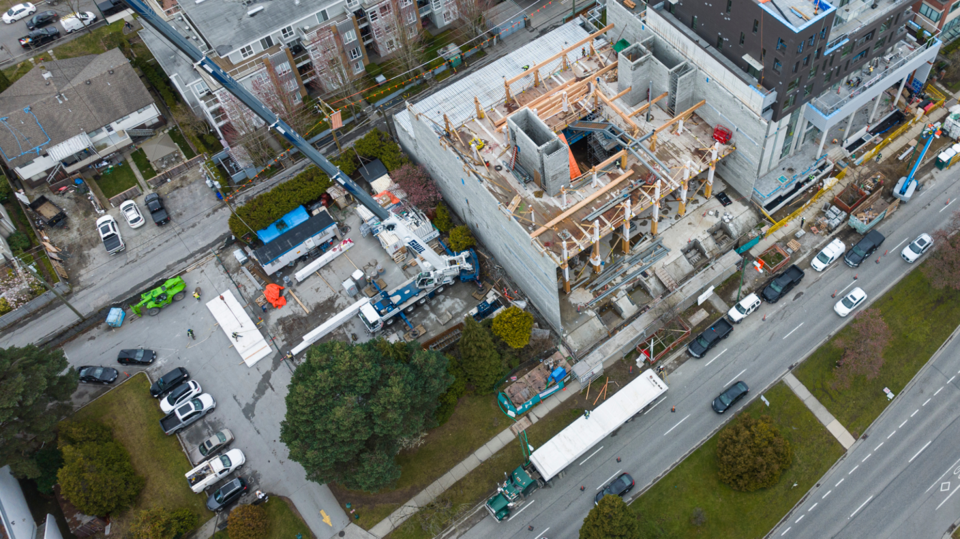With urban areas worldwide prioritizing sustainable building solutions, the focus shifts to mass timber and wood-hybrid construction, particularly for mid-sized buildings. British Columbia, known for its abundant natural resources and timber engineering expertise, leads this movement. In 2019, jurisdictions in B.C. allowed mass timber buildings up to 12 stories tall.
Now, the City of Vancouver joins the mass timber construction movement with new policies and incentives to reshape the skyline while setting global sustainability standards. These measures, introduced last month, aim to promote the construction of high-rise mass timber buildings and transition to more sustainable construction methods.
Under the new rezoning incentive:
- Buildings in areas zoned for 8 to 11 storeys can now qualify for an additional two storeys.
- Buildings in areas zoned for 12 storeys or more can qualify for an additional three storeys.
Additionally, a new incentive introduced in the Zoning & Development By-law will raise the permitted height for mass timber buildings and provide extra support during the pre-application stage.
This announcement demonstrates the city's commitment to innovation, economic growth, and environmental stewardship, with plans for ongoing evaluation and adaptation based on stakeholder input.
These updates are also motivated by recent research by Simon Fraser University’s Renewable Cities program, which highlights the pivotal role of local government policies in facilitating mass timber projects. The study, "Building Capacity: Local Prefab Mass Timber Solutions," emphasizes the economic and environmental advantages of prefabricated mass timber buildings.
The study also addresses challenges related to three particular processes:
Building permits
Mass timber construction offers shorter timelines, but outdated permit processes can impede this benefit. Modernizing permit processes to accommodate digital submissions and issuing partial permits can support time-saving off-site construction methods.
Design guidelines
Mass timber's unique structural characteristics require adjustments in design guidelines to ensure fair treatment and prevent inadvertent penalties.
Zoning
High-density mass timber buildings face zoning challenges. Introducing new high-density zoning categories or modifying existing zones can better accommodate mass timber construction and meet housing demands.
Collaboration between industry stakeholders and local governments is crucial for realizing the full potential of mass timber construction. The SFU study aims to enhance understanding and offers recommendations for policy adjustments. By embracing innovative building forms like mass timber, municipalities can foster sustainable urban growth.
Visit naturally:wood’s website to learn more about the economic, environmental and design possibilities for taller wood buildings with prefabricated mass timber construction.




